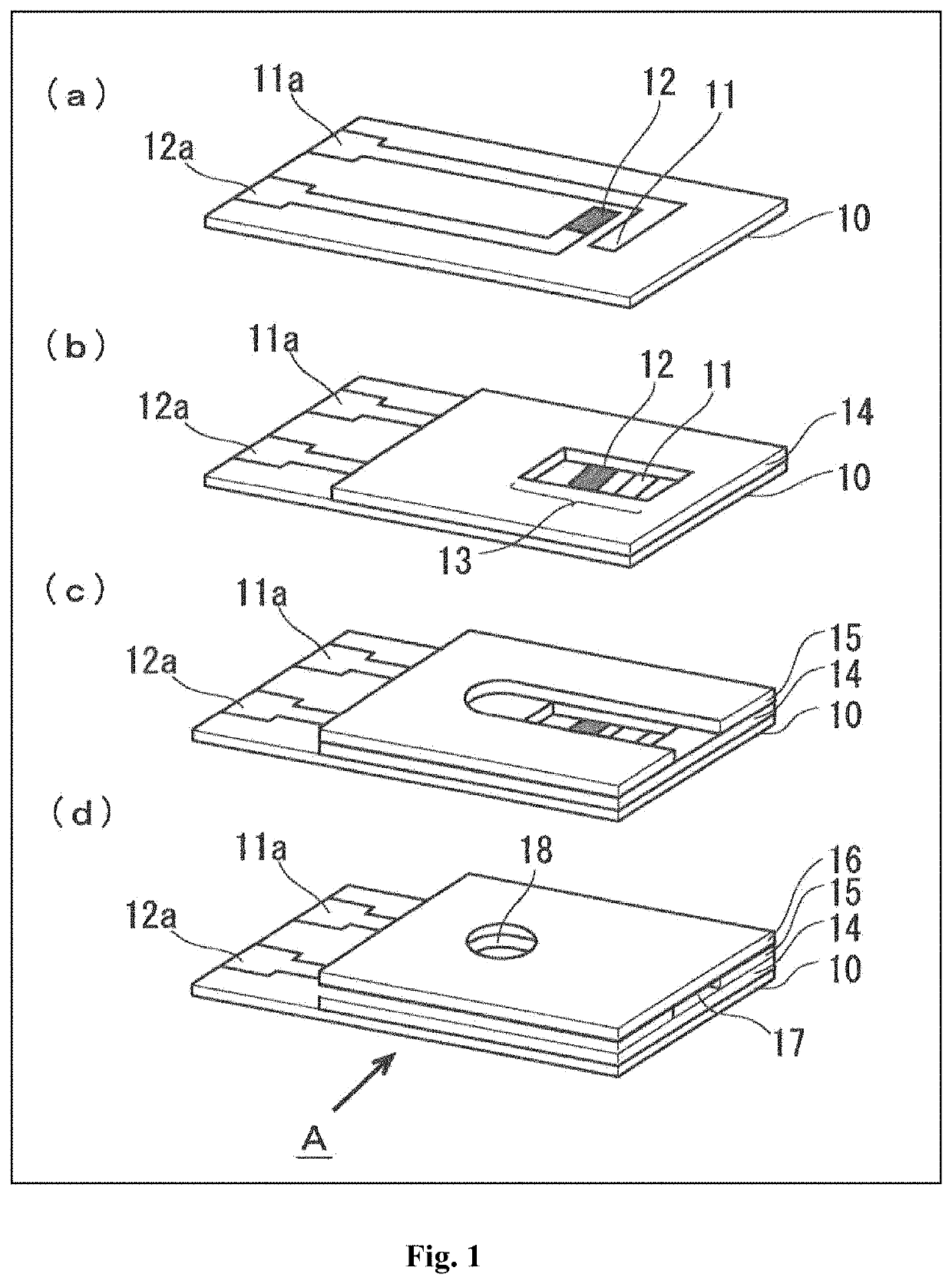Biosensing Method
a biosensor and sensor surface technology, applied in the field of biosensors, can solve the problems of loss of resolution, hydrogen peroxide may have an irreversible effect on the sensor surface material, and the stability of the enzyme-immobilized film, so as to prevent the reduction of resolution and reduce noise. , the effect of accurate measuremen
- Summary
- Abstract
- Description
- Claims
- Application Information
AI Technical Summary
Benefits of technology
Problems solved by technology
Method used
Image
Examples
example 1
[0100]Preparation of Sensor
1. Application of a mesoporous carbon dispersion (trade name, CNovel P(4)050; concentration, 1%; 10 μL) to an Au electrode (surface area, 7 mm2)
2. Application of an aqueous Burkholderia cepacia glucose dehydrogenase (FADGDH γαβ) (having a QYY mutation in the α-subunit) solution (0.013 mg / mL, 7 μL) and drying (for a control, application of an aqueous BSA solution (0.0128 mg / mL, 7 μL))
3. Treatment with 25% glutaraldehyde (GA) vapor for 1 hour to perform cross-linking of FADGDH γαβ to the electrode
[0101]The enzyme electrode prepared as described above was combined with a counter electrode and a reference electrode (both of which were Ag / AgCl) to provide a biosensor, and a potential of +100 mV (vs Ag / AgCl) was applied to the enzyme electrode (3 times of 10 seconds of application), followed by immersion in a glucose solution (100 mM PPB pH 7.0, 37° C.) having a predetermined concentration (0.1, 1, 3, 5, 10, 15, or 20 mM) to cause en...
example 2
2-1. Preparation of GDH-SAM Sensor
[0108]1. Overnight piranha treatment of the surface of an Au electrode (surface area, 7 mm2), and washing with acetone
[0109]2. Overnight immersion of the electrode in 10 μM DSH solution for DSH modification
[0110]3. Overnight immersion in a glucose dehydrogenase solution (26.3 mg / mL FADGDH γαβ / 100 mM PPB (pH 7.0)) for immobilization of GDH on the electrode through SAM
2-2. Preparation of GDH-MWCNT Sensor
[0111]1. Application of a multi-walled carbon nanotube (MWCNT) dispersion (trade name, Meijo Nano Carbon MWNT INK (MW-I); concentration, 2%; 2 μL) to an Au electrode (surface area, 7 mm2)
[0112]2. Application of an aqueous Burkholderia cepacia glucose dehydrogenase (FADGDH γαβ) solution (0.013 mg / mL, 7 μL) and drying (for a control, application of a BSA solution)
[0113]3. Treatment with 25% glutaraldehyde (GA) vapor for 1 hour to perform cross-linking of GDH to the electrode
[0114]Each enzyme electrode prepared as described above...
example 3
Preparation of GDH-GC Sensor
[0117]1. Grinding and washing of the surface of a glassy carbon (GC) electrode
[0118]2. Overnight immersion in a glucose dehydrogenase solution (26.3 mg / mL FADGDH γαβ / 100 mM PPB (pH 7.0)) for immobilization of GDH on the electrode (for a control, use of a non-direct electron transfer type GDH containing no cytochrome)
[0119]3. Treatment with 25% glutaraldehyde (GA) vapor for 1 hour to perform cross-linking of GDH to the electrode
[0120]The enzyme electrode prepared as described above was combined with a counter electrode and a reference electrode (both of which were Ag / AgCl) to provide a biosensor, and a potential of +100 mV (vs Ag / AgCl) was applied to the enzyme electrode (1 time of 10 seconds of application), followed by addition of glucose at a predetermined concentration to cause enzymatic reaction, and measurement of the open circuit potential. This step was repeatedly carried out.
[0121]As a control, a biosensor comprising a...
PUM
| Property | Measurement | Unit |
|---|---|---|
| thickness | aaaaa | aaaaa |
| thickness | aaaaa | aaaaa |
| time | aaaaa | aaaaa |
Abstract
Description
Claims
Application Information
 Login to View More
Login to View More - R&D
- Intellectual Property
- Life Sciences
- Materials
- Tech Scout
- Unparalleled Data Quality
- Higher Quality Content
- 60% Fewer Hallucinations
Browse by: Latest US Patents, China's latest patents, Technical Efficacy Thesaurus, Application Domain, Technology Topic, Popular Technical Reports.
© 2025 PatSnap. All rights reserved.Legal|Privacy policy|Modern Slavery Act Transparency Statement|Sitemap|About US| Contact US: help@patsnap.com



